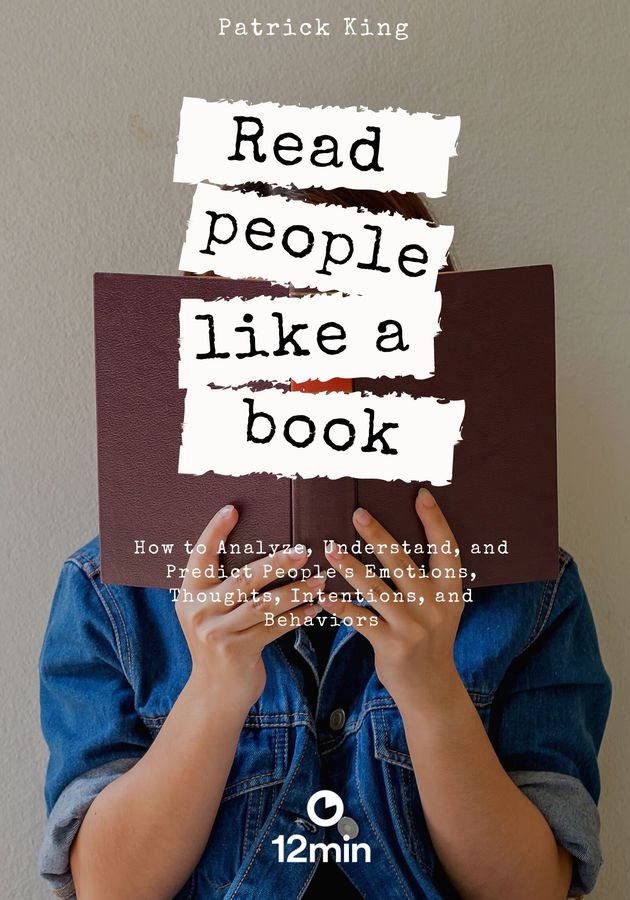Poets got it all wrong: falling in love is easy; staying in love is the difficult part. Case in point: according to psychologist Dorothy Tennov, a leading authority on romantic love and limerence, “the average lifespan of a romantic obsession is two years.” Afterward, as most married people know, it’s all just routine.
The reason for this is simple: the physiological part of love – hormones, infatuation, the need to be in someone’s company – naturally fades with time. And if you want to transform this in-love experience into something bigger – that is, lifelong real love – you need to learn to communicate your feelings with your partner.
According to Gary Chapman, achieving this is synonymous with mastering your spouse’s love language. And as the title of his most famous book suggests, there are 5 Love Languages. Get ready to hear all about them!
Love language #1: words of affirmation
Mark Twain once said, “I can live for two months on a good compliment.” “If we take Twain literally,” Chapman states, “six compliments a year would have kept his emotional love tank at the operational level.” Of course, provided that his primary love language was the first one of Chapman’s five: words of affirmation.
As everybody knows, verbal compliments are powerful communicators of love, but for some people, nothing is more important to them. Merely saying to your spouse something like, “You look sharp in that suit” or “I really appreciate you washing the dishes tonight” might be enough to earn their attention and appreciation. If that is the case, their primary love language is language itself, and they prefer hearing a simple and honest compliment to getting an expensive gift.
Just like with real languages, love languages have many dialects. Giving verbal compliments is one way to express words of affirmation to your spouse. You can also do it in many other ways, using various encouraging (“Go for it!”), or humble words (“Do you think it will be possible for you to clean the gutters this weekend?”). You can even write a poem or, if you are not a person of many words, keep a notebook titled “Words of Affirmation,” noting down book or movie quotes you consider romantic or tender. Your spouse should recognize the value of that effort.
Whatever you do, though, refrain from using hurtful comments or criticism. People who speak the love language of affirmative words will be deeply hurt even by the most innocuous negative remark.
Love language #2: quality time
Even in the past when people didn’t have smartphones and didn’t stay at work after the end of their work hours, the majority of married couples spent most of their time near each other, and not with each other. Emotionally, this is the most draining and love-emptying experience for people who are primarily versed in the love language of quality time.
“A central aspect of quality time is togetherness,” writes Chapman. “I do not mean proximity. Two people sitting in the same room are in close proximity, but they are not necessarily together. Togetherness has to do with focused attention.” By definition, this excludes every conversation you have had with your spouse while doing something else and every activity from which you are the only one who gets pleasure (be that watching football or driving the car).
The love language of quality time encompasses two main dialects, and usually, both of them are equally important to its speakers: quality conversations and quality activities.
To master the art of quality conversations, it is vital that you follow these five practical tips:
- Maintain eye contact when your spouse is talking.
- Don’t listen to your spouse and do something else at the same time.
- Listen for feelings, by asking yourself, “What emotion is my spouse currently experiencing?”
- Observe body language: sometimes it conveys a different message from the words.
- Refuse to interrupt: your goal is to discover your spouse’s thoughts and feelings, not to defend yourself or hurl accusations at them.
As far as quality activities with your spouse are concerned, think of them not merely as things you both want to do, but as things that will give you a chance to express your mutual love for each other. The more common activities you share with your quality-time speaking spouse, the more they will cherish the time spent with you. Plus: you will have more shared memories to look back on in the future, say, on the joyful fortieth anniversary of your wedding.
Love language #3: receiving gifts
Even though you might deem someone shallow if their love language is one of receiving gifts, in truth, there is nothing wrong with believing that love can be primarily expressed by way of thoughtful presents. After all, gifts are not material objects, but, in the words of the author, “visual symbols of love.”
A gift is essentially a thought incarnate, something you can hold in your hand and say, “Look, he was thinking of me,” or, “She remembered me.” You must first think of someone to give them a gift. And if you give your partner gifts often – especially if those gifts are considerate and innovative – that means that you think about them regularly. A person whose primary love language is that of receiving gifts will translate this to the emotionally fulfilling experience of being thought about and cared for and, more importantly, the feeling of requited, heartfelt love.
Gifts may be purchased, found, or made – these are the main dialects of this love language. Because of this, not having enough money is never a good excuse for holding back from showering your spouse with presents. Nobody says that gifts need to be expensive: a picked wildflower or a simple “I love you” card cut out from yesterday’s newspaper can be more than enough. In truth, this love language is one of the easiest to learn, and you should use this to your benefit.
All you need is a list of some of your spouse’s wishes and most of the gifts he or she has expressed excitement about receiving through the years. Of course, this should be coupled with an up-to-date calendar of all birthdays, anniversaries and special occasions: forgetting them profoundly hurts and insults the speakers of this language.
What really melts those who speak this language is being there for them when it matters the most, that is to say, giving them the gift of the self. “Physical presence in the time of crisis is the most powerful gift you can give if your spouse’s primary love language is receiving gifts,” writes Chapman, subtly and justly reminding his readers of the numerous metaphorical meanings of the word “gift.”
Love language #4: acts of service
In one of the most moving scenes of the New Testament, just before the Passover festival, Jesus Christ washed the feet of his disciples. According to Chapman, by doing that, Jesus “gave a simple but profound illustration of expressing love by an act of service.” His apostle Peter summed it up later in no more than five words: “Serve one another in love.”
If your spouse is someone who often wishes you would take out the trash or clean up after you eat, then they probably swear by Peter’s creed above, and their primary love language is the fourth one: acts of service.
The best and simplest way to attend to this language is by voluntarily and purposefully doing helpful things for your partner, anything from vacuuming to grocery shopping, from taking the dog to the vet to helping the kids with their homework. The keyword here is “voluntarily”: acts of service cannot be legitimate expressions of love if they become obligations or are done reluctantly.
Similarly, if your primary language is acts of service, you should be aware that you can’t demand help from your spouse, in much the same way that you can’t demand love from them. You can only request it – and in a kind and humble manner. “Requests give direction to love,” writes Chapman, “but demands stop the flow of love.” Love is, essentially, an act of self-sacrifice, so it should never be about what your spouse can do for you, but what you can do for your spouse.
We cannot overstress the importance of that last part: if your spouse wants you to change your kids’ diapers, and, instead, you set the table for dinner, despite doing an act of service, you’re not actually expressing your love through it, but, on the contrary, the lack of it. You’re speaking, at best, a different dialect of the same language with your spouse; at worst, you are forcefully silencing the cry for love coming from their direction.
Love language #5: physical touch
You don’t need anyone to tell you that physical touch is a way of communicating emotional love: after all, whether in the vicinity of your child, your parent or your spouse, you must have instinctively felt at one point or another that the best (and even only) way to express your connection with them is by touching them.
During the past several decades, science has conclusively demonstrated that there’s a sound reason for this instinct: babies who are held, hugged and kissed tend to develop a healthier emotional life than those who are left for long periods of time without physical contact.
Of the five senses, touching is the only one not limited to one localized area of the body. Tiny tactile receptors are located throughout the body: when they are touched or pressed by a certain object, nerves carry these impulses to the brain. The brain interprets these impulses and, based on these interpretations, we perceive certain traits of the object in question: whether it is warm or cold, rough or smooth, hard or soft. Whether it causes pain or pleasure. Finally, whether it is loving or hostile.
For some individuals, physical touch is their primary love language. Not being touched enough by their spouses translates, in their brains, to not being properly loved. Conversely, most of the dialects of this language – holding hands, kissing, embracing, sexual intercourse – fill their emotional tank and amount to a feeling of safety, tenderness, attachment and love.
“If your spouse’s primary love language is physical touch,” writes Chapman, “nothing is more important than holding her as she cries.” As in the case of the fourth love language, it makes no sense to do this reluctantly. The same type of physical touch can make or break a relationship because it can communicate hate or love based on your intention and the extent of your willful participation.
Finally, never forget that the body is biologically built for touching, and that if your spouse speaks the fifth language of love, it is your duty to explore it with them, asking for appropriate feedback until you discover what they enjoy the most. Don’t be pushy, though: your spouse is the only one who knows whether a touch feels good to them or not.
Discovering your primary love language
It is important to know the five love languages, their dialects and how to speak them. However, that knowledge means nothing if you don’t know your spouse’s love language. Discovering it, says Chapman, “is key to a successful relationship – and you need to know yours too, so you can relay the information to them.”
The best three ways to discover your own primary love language are the following:
- Ask yourself what things your spouse does or fails to do hurt you most deeply. The opposite of what hurts you most is probably your love language.
- Ask yourself what you have most often requested of your spouse. Needless to say, the thing you have most often requested is likely the thing that makes you feel most loved.
- Finally, ask yourself in what way do you regularly express love to your spouse. Your method of expressing love may be, in itself, an indication of your primary love language, since we often do the things we want others to do for us.
Using these three approaches will probably enable you to determine your primary love language. If you can’t decide between two, don’t worry. You might be bilingual. And that’s not a drawback, but an advantage: you’re actually making it easier for your spouse.
Final Notes
Somewhat simplistic and too generalized to be scientific, Gary Chapman’s The 5 Love Languages has nevertheless endured the test of time.
So, we encourage you to put its wisdom to the test. Who knows – the reason behind most of your love troubles might be as simple as being unable to communicate your feelings to your partner due to language incompatibility!
12min Tip
Discover your primary love language and ask your partner to do the same. Then all that’s left is for you to learn to speak each other’s love language.





























